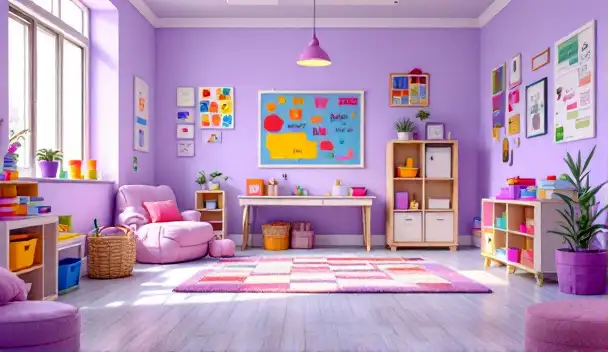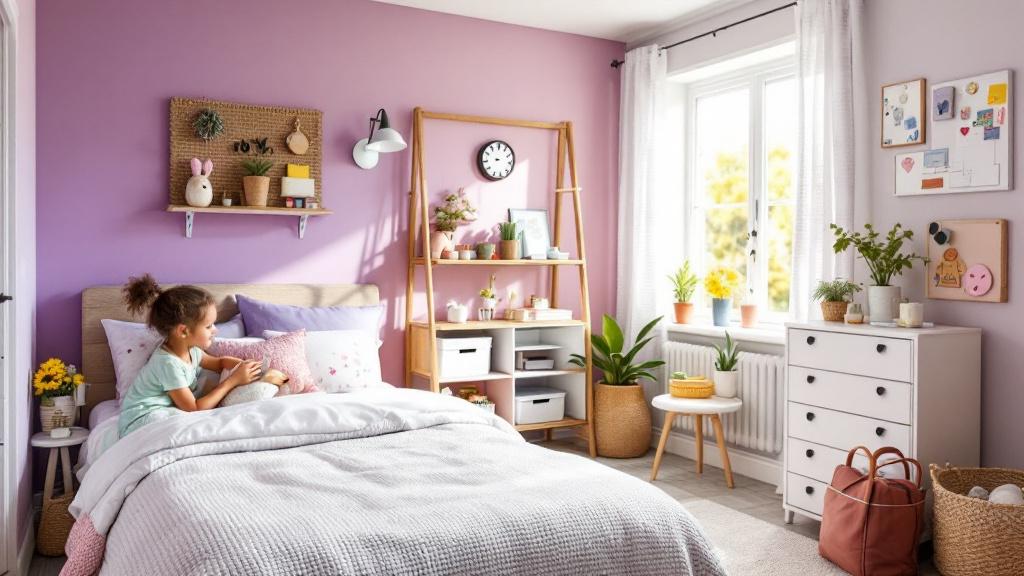Enhancing Care through Personalized In-Home ABA Therapy
Home-based Applied Behavior Analysis (ABA) therapy is transforming the way children with autism receive treatment. By delivering personalized, one-on-one care within the familiar confines of their home, this approach fosters a supportive environment that enhances learning, communication, and social skills. Here, we explore how in-home ABA therapy offers more effective, tailored attention and the myriad benefits it provides for children and their families.
The Role of Trained Professionals in Implementing ABA Interventions

Who typically works directly with clients to implement behavior plans in ABA therapy?
In ABA therapy, the professionals who work most directly with children are known as Registered Behavior Technicians (RBTs). These trained practitioners are responsible for implementing the behavior plans developed for each child.
RBTs carry out specific strategies and interventions, such as teaching new skills and reducing challenging behaviors. They use positive reinforcement techniques, conduct skill acquisition activities, and collect data to monitor progress.
Their work is fundamental to the therapy process, as they put into action the treatment plan designed by licensed professionals. RBTs work closely with children during sessions, gradually helping them navigate daily routines like requesting, following instructions, and socializing.
What are the qualifications and responsibilities of professionals like RBTs and BCBAs?
Registered Behavior Technicians (RBTs) are required to complete specific training and certification programs to ensure they understand ABA principles. They receive supervision from Board Certified Behavior Analysts (BCBAs) or other licensed behavior analysts.
BCBAs hold advanced credentials and are responsible for designing the individualized treatment plans. They supervise RBTs, analyze data collected during sessions, and adjust strategies to optimize outcomes.
Their responsibilities include conducting initial assessments, developing treatment goals, training family members, and coordinating with other providers to support the child's development.
| Professional Role | Qualifications | Primary Responsibilities |
|---|---|---|
| RBT | Completed required training & certification | Execute ABA strategies, collect data, support skill building, implement behavior plans |
| BCBA | Graduate degree in behavior analysis or related field, certification | Design and oversee treatment plans, supervise RBTs, analyze progress, adjust goals |
More Information
For a detailed understanding of behavior technicians’ roles in home-based ABA therapy, a common search query is "Role of behavior technicians in home-based ABA therapy," which highlights their critical contribution in delivering consistent, personalized interventions within the familiar environment of the child's home.
How In-Home ABA Therapy Works in Practice

How does ABA in the home work?
In-home ABA therapy is designed to provide personalized behavioral interventions directly within the child's familiar environment. Trained therapists work closely with families to develop tailored strategies that fit everyday routines, such as mealtime, playtime, or dressing. This setting allows children to practice new skills in real-life situations, making learning more practical and engaging.
The process begins with an assessment to identify the child's specific needs and goals. Therapists then collaborate with parents and caregivers to create a treatment plan that includes clear, achievable objectives. During each session, therapists use positive reinforcement and systematic teaching methods rooted in behaviorism to encourage desired behaviors.
Regular data collection and communication help track progress, allowing for quick adjustments to tactics as needed. This ongoing process ensures that interventions remain effective and aligned with the child's growth, ultimately fostering independence and social skills.
In essence, ABA therapy at home combines professional guidance with family involvement, making it a flexible and impactful approach to supporting children with developmental challenges.
Efficacy and Benefits of In-Home ABA Therapy
In-home ABA therapy has proven to be an effective approach for children with autism spectrum disorder (ASD). This therapy method allows children to learn and practice skills within their natural environment, which fosters better retention and real-world application of behaviors.
One of the main advantages is its ability to promote skill generalization. When therapy takes place at home, children are able to transfer learned behaviors to everyday settings, such as mealtime, playtime, and routine activities. This practical approach helps children build independence and confidence in their daily lives.
Furthermore, in-home therapy offers significant benefits like comfort and reduced stress. Being in a familiar environment minimizes sensory overload caused by bright lights, loud noises, and crowded clinic spaces. It also lowers the risk of illness due to fewer interactions with other children, creating a healthier setting.
Family participation plays a crucial role in the success of in-home ABA. Parents and family members can actively learn and reinforce strategies, strengthening bonds and ensuring consistency. This involvement not only encourages better behavioral outcomes but also empowers families with the skills needed for ongoing support.
The personalized nature of this therapy adapts seamlessly to each child's unique needs and environment. It provides tailored intervention strategies, integrates preferred activities, and accommodates family routines, making therapy more engaging and effective.
Studies and clinical experiences affirm that when delivered by trained professionals, in-home ABA therapy leads to improvements in communication, social interaction, and emotional regulation. Overall, its flexibility, individualized care, and focus on real-life application make it a valuable option for children with ASD.
Personalized Care and Family Involvement

How does home-based ABA therapy provide more personalized and effective care for children with autism?
Home-based ABA therapy stands out for its ability to deliver tailored treatment plans directly in a child's natural environment. Therapists observe and incorporate each child's unique strengths, preferences, and daily routines into the intervention strategies. This personalized approach ensures that therapy is relevant and meaningful, facilitating better engagement and learning.
Working within the home setting allows children to practice skills in real-life situations, which boosts their ability to generalize these skills beyond therapy sessions. For example, a child learning to request items can do so during mealtimes or play, making the skill more practical and easily incorporated into daily life.
Family involvement plays a vital role in reinforcing progress. Caregivers actively participate in therapy, learning to implement techniques consistently. This collaboration helps strengthen family bonds and creates a supportive environment for the child's development.
The familiarity of the home environment also reduces anxiety, making children more comfortable and receptive to learning. This comfort level often results in increased motivation and better outcomes. There are additional benefits such as flexibility in scheduling, reduced exposure to illnesses common in clinics, and seamless integration of therapy into everyday routines.
Altogether, these factors make home-based ABA a highly effective approach for addressing the individual needs of children with autism, leading to improved skill acquisition and greater independence.
Advantages and Long-Term Outcomes of Home-Based ABA Therapy

What are the advantages of home-based ABA therapy for children with Autism Spectrum Disorder?
Home-based ABA therapy provides many benefits that can significantly impact a child's development. One of the primary advantages is creating a comfortable environment where children feel secure, reducing stress and increasing their willingness to participate in learning activities.
Since therapy sessions happen in familiar surroundings, children can more naturally practice essential skills like requesting, following instructions, and socializing in real-life situations. This natural setting also helps in better generalization of skills—meaning children are more likely to use what they learn across different parts of their daily lives.
Family involvement is a vital aspect of this approach. Parents, siblings, and other caregivers are actively engaged through training, which reinforces skills and behaviors outside of therapy sessions. This collaboration strengthens family bonds and ensures consistency in applying strategies.
The convenience of in-home therapy cannot be overstated. Eliminating travel saves time and money, reducing logistical burdens on families. Because sessions are scheduled flexibly, therapy can be integrated smoothly into daily routines.
Another significant benefit is the reduction of sensory overload often experienced in clinical settings, which may include bright lights, loud noises, or crowded spaces. Less exposure to illness and shared environments also supports children’s health.
Research supports these advantages, showing that personalized approaches tailored to each child's needs produce more meaningful progress. Families often note improvements such as better daily routines, decreased social anxiety, and calmer behaviors.
In summary, home-based ABA therapy offers a natural, personalized, and effective setting that fosters development, strengthens family involvement, and enhances long-term outcomes for children with Autism Spectrum Disorder.
Empowering Families Through Personalized In-Home Care
In-home ABA therapy is redefining treatment for children with autism by offering deeply personalized, effective, and convenient care. Integrating strategies seamlessly into daily routines within a familiar setting not only enhances skill generalization and retention but also fosters stronger family bonds. The close, one-on-one attention from trained professionals ensures that therapy is adapted to each child's evolving needs, leading to better developmental outcomes. As families and therapists collaborate closely, this approach creates a supportive environment that maximizes progress, promotes independence, and improves overall quality of life. For children with autism, home-based ABA therapy is more than just treatment—it's a foundation for lifelong growth and success.
References
- Why In-Home ABA Therapy Can Be a Game-Changer for Children ...
- A creative solution to improve equity in Applied Behavior Analysis ...
- Home-Based ABA Therapy: Is It the Best Fit for Your Child?
- ABA Therapy at Home: Pros and Cons - Family Hope Solutions
- The Impact of One-on-One Therapy for Kids with ASD: Transforming ...
- In-Home ABA Therapy - Constellation Kids
- Why Home-based ABA Therapy Is A Gamechanger
- 6 Life-Changing Benefits of ABA Therapy for Children with Autism





































































































